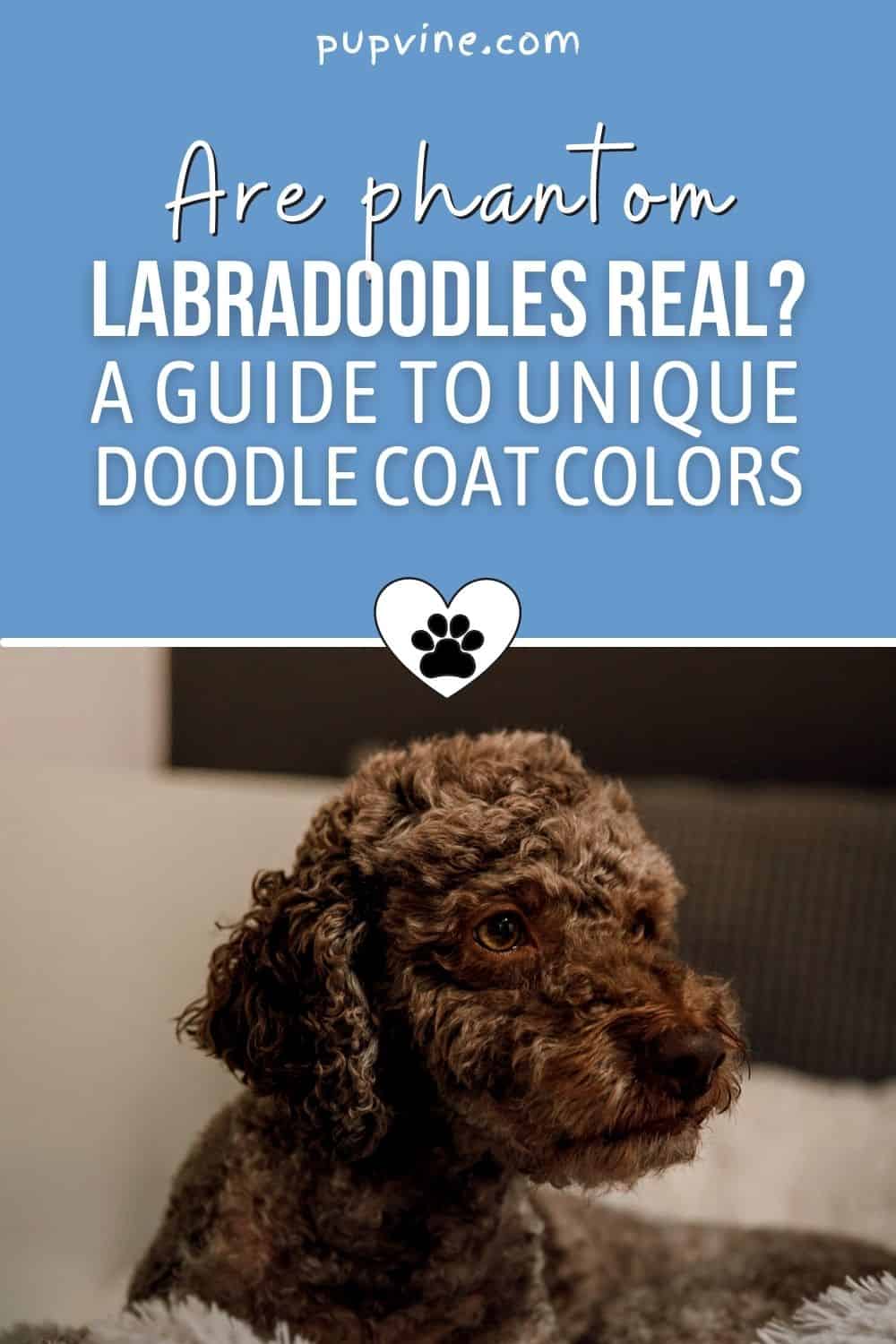What is cuter than a Labrador or a Poodle? A Labradoodle!
This gorgeous hybrid breed has taken the world by storm. Everyone loves them! And how couldn’t they, considering they’re a mix of two of the most adored breeds globally.
One of the reasons people love Doodles so much is because of the wide variety of colors their coats can come in, something not expected of a Labrador mix. Other reasons, of course, include their gorgeous looks and adorable personalities.
If you’re contemplating getting a Labradoodle, you should know that this breed can have a virtually infinite number of coat patterns. They come in apricot, chocolate, and there is even a phantom Labradoodle!
We’ll go over some of the most popular fur colors and try to explain how they came to be.
Let’s get started!
Why So Many Colors?
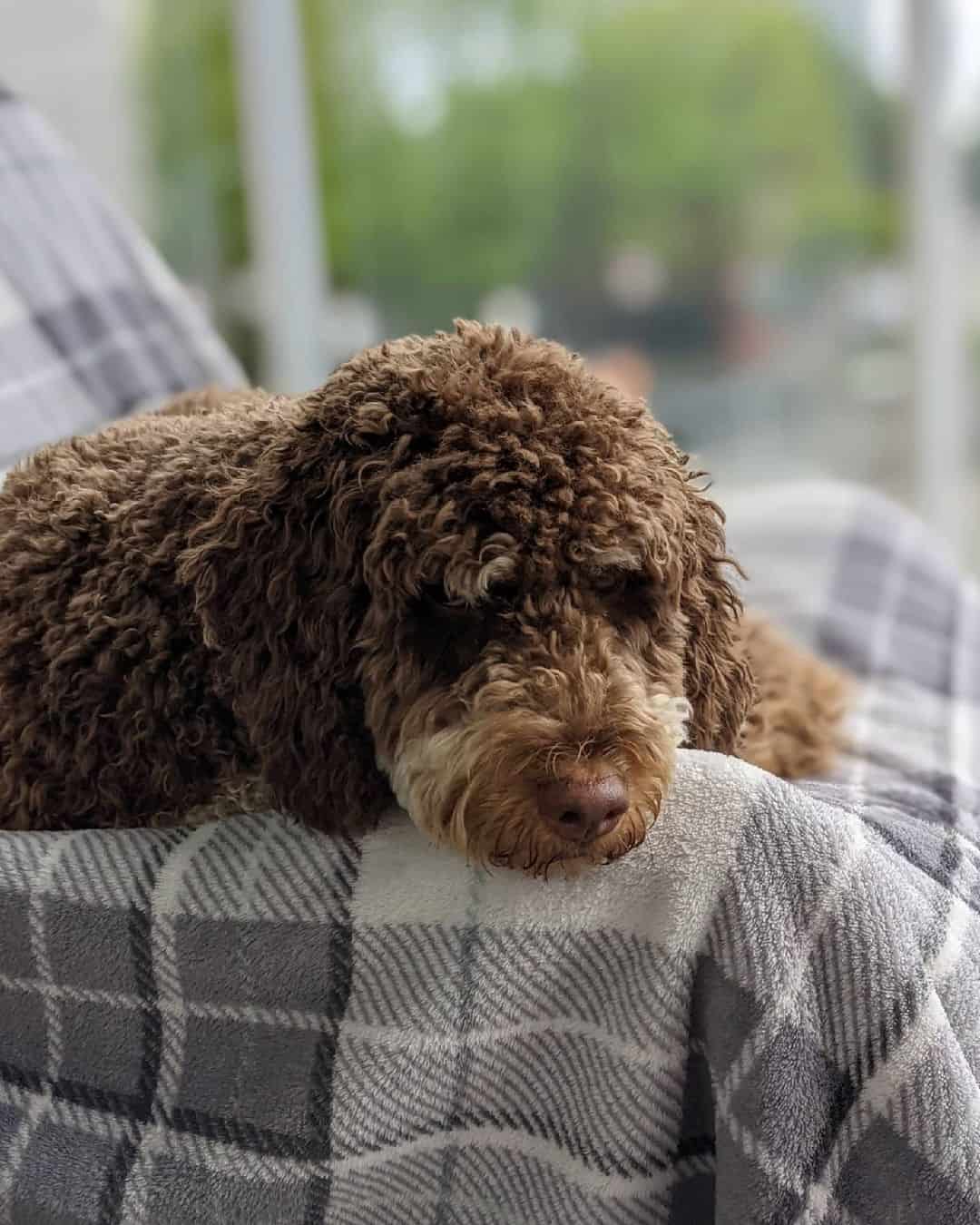
Photo from:@miss.poppy.girl
A Labradoodle isn’t a pure breed that the AKC recognizes. In fact, it is what is known as a ‘designer breed’ or a ‘hybrid breed.’ What does that mean?
Hybrid breeds are crossbreeds of two purebred dogs that are, essentially, of a different breed.
For example, we have the Shorkie, the offspring of a Shih Tzu and a Yorkshire Terrier, the Goldendoodle, a crossbreed of a Golden Retriever and a Poodle, and a Labradoodle, which is – you’ve guessed it! – the mix of a Poodle and a Labrador Retriever.
Labradoodles are friendly, intelligent, and mostly hypoallergenic thanks to their low-shedding Poodle parent, which is why they’ve become one of the most widespread hybrid breeds out there.
Labradoodles come in several sizes, depending on their Poodle parent. You can find standard Labradoodles, micro Labradoodles, and even rare teacup Labradoodles!
They also come in several dozen coat colors and patterns.
Why is that?
As we’ve said, the Labradoodle is a crossbreed. Its parents are the Labrador, which comes in three standard colors, and the Poodle, which is bred in ten coat variations. When you multiply these, you get an almost infinite number of combinations.
Add non-standard colors, such as parti Poodles or multi-colored Labradors, and it’s easy to see how there are so many different fur colors.
Since there isn’t a specific breed standard that determines a dog’s characteristics, unlike in registered dog breeds, the possibilities are endless.
We’ll go over most colors a Doodle can come in and explain a bit further.
Golden Labradoodle

This is a pretty standard color for this breed. At the same time, it’s one of the most popular fur colors in Doodles.
Also known as the Apricot Labradoodle, the AKC considers this hair color pretty standard in Poodles.
Despite people believing Labradoodles inherited this color from their Labrador parents, it’s, in fact, Poodles that are commonly found in this exact shade.
As the apricot color was the last to be recognized as a standard shade for Poodles by the AKC, it probably originated from mixing blue, silver, and dark brown genetic traits for fur pigments.
It isn’t uncommon for a Labradoodle of this shade to have some black features contrasting the fur’s solid color. The same can happen with golden Labradors, as well.
This usually includes their nose, eyes, eye rims, and toenails. Sometimes, their nose can also be brown.
At first glance, it’s easy to see why people love this color. These cute little dogs resemble teddy bears and look more like a toy than anything else.
Apricot Doodles tend to become lighter as they grow older. In fact, a golden Labradoodle puppy might, later on, be confused with the cream Labradoodle since their color fades that much.
Cream Labradoodle
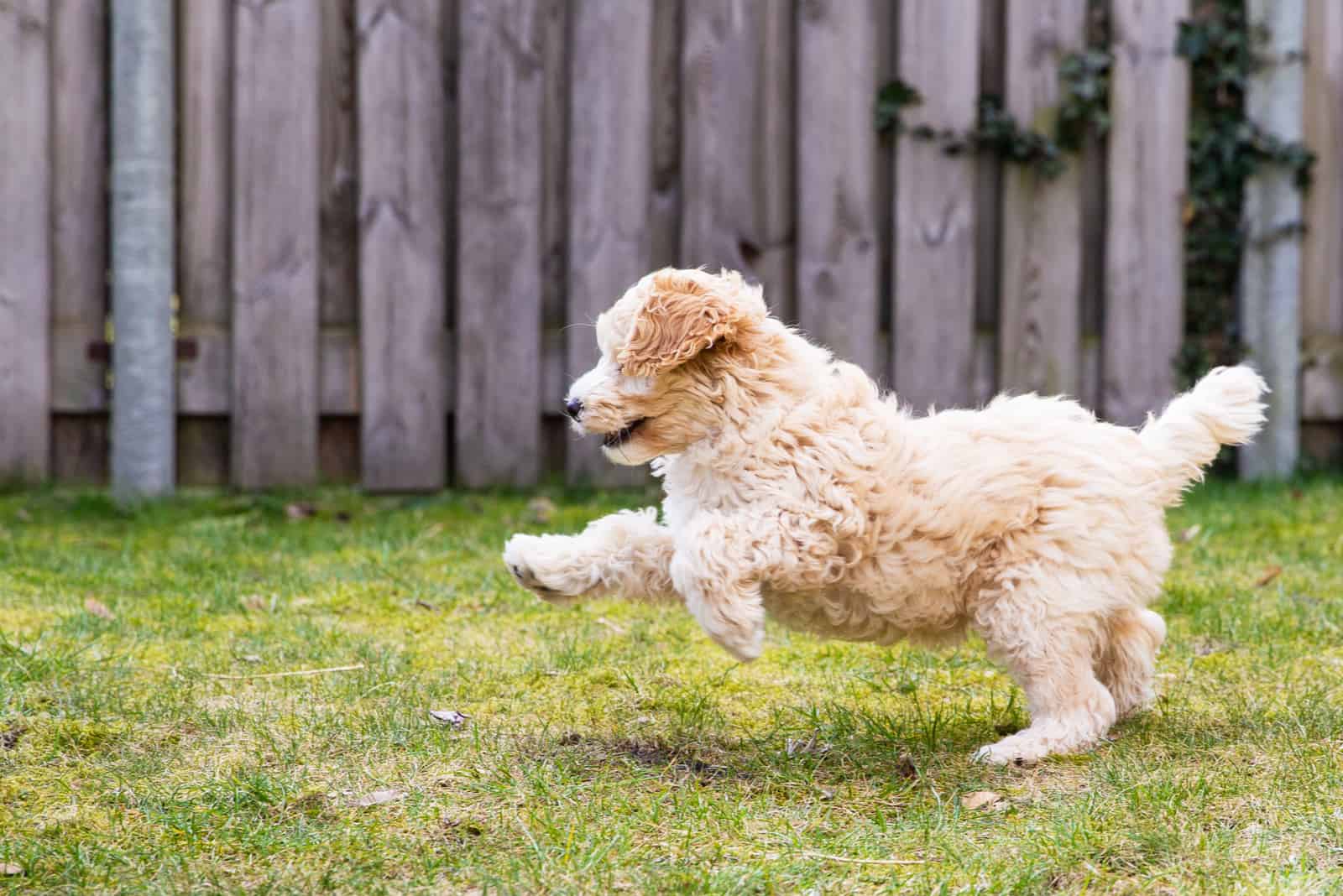
If your pooch picked up more features from their Labrador parent, some people might not even believe you when you say he is a Labradoodle! These dogs come in light shades that aren’t pure white, so they are considered ‘cream.’
A cream Labradoodle coat gene is usually used for breeding several different colors in the long run. For example, you can find cream shadings in the merle Labradoodle, parti Labradoodle, or the phantom Labradoodle.
This coat color is quite unique since the rest of the Labradoodles’ features can vary significantly due to their parents’ genetics.
They can have both dark and light noses, various eye shades, and even light toenails. However, most cream Labradoodles have fairly pinkish skin under their bright coats.
In fact, the possibilities for this shade are so great that you will hardly struggle to find two same dogs in this coat color.
Red Labradoodle

This shade looks quite similar to the mahogany hair color in humans. It is somewhat darker than the apricot Labradoodle, but these dogs still resemble kid’s toys with their dark nose and eyes.
Red Labradoodles are relatively rare, as the shade is inherited via recessive genes. Also, neither Poodles nor Labrador Retrievers come in red – not if the AKC acknowledges them as there are red Poodle varieties out there. Because of this, they can be quite challenging to find.
While the exact fur shade is more of a very dark golden, breeders prefer calling these dogs red as they are easily distinguished from other colors.
Red Labradoodles are usually bred as the offspring of a dark-colored Poodle with a cream or tan Labrador. Also, while they aren’t as common, many people believe this is the Labradoodles’ primary color.
Black Labradoodle

Another standard color for Labradoodles, the black shade is typically the result of crossbreeding a black Poodle and a chocolate Labrador.
Unlike Goldendoodles, Labradoodles often come in pure black color. This is because both the Poodle and the Labrador can come in dark shades, unlike the Golden Retriever that is lighter in color.
Black fur is also a recessive genetic trait, so it isn’t as common as the apricot one. Unless both parents are black or at least chocolate, it can be difficult to breed a black Labradoodle. In fact, even if both the Poodle and the Labrador are black, you might get chocolate puppies.
All of this can make black fur color somewhat unpredictable.
Typically, black Labradoodles come in a solid black color. This includes their paws, noses, eyes, paw pads, and all other physical attributes.
If you look at other Labradoodle shades, you’ll notice that most dogs have at least two colors in them. This isn’t the case with black Labradoodles, which tend to be pure black.
Chocolate Labradoodle
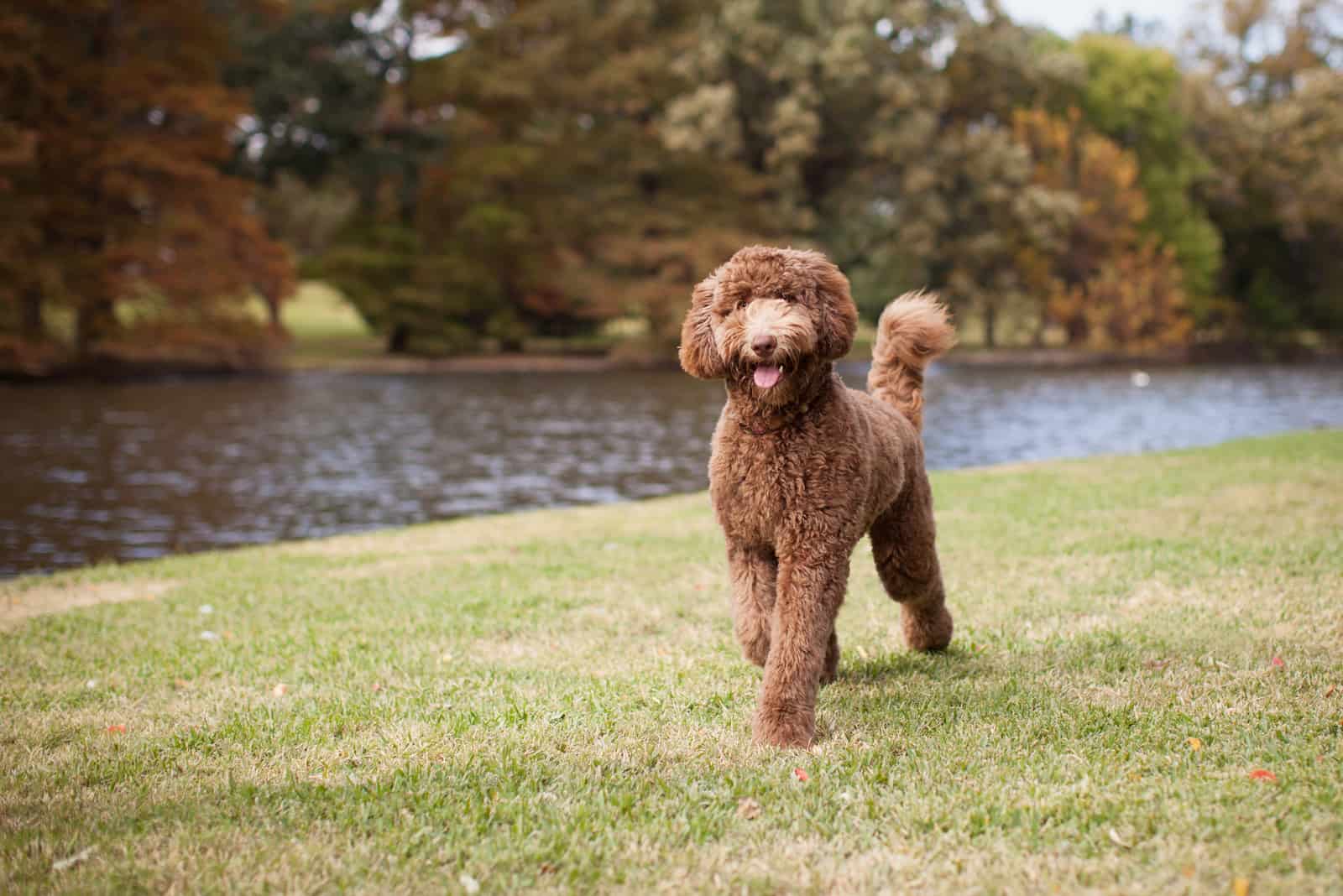
Chocolate Labradoodles – also known as brown Labradoodles – aren’t rare since this is a pretty standard color for a Labrador Retriever.
There are several different shades these dogs can come in, so you can find Doodles in milk chocolate, dark chocolate, or even dark mahogany.
This type of coat is usually described as a dark, red shade with a dull pecan color.
Chocolate Labradoodles often have two shades mixed into one. This is because dark tones are recessive, so the second color, which is usually lighter, tends to mask these genes.
You can even find multi-colored chocolate Labradoodles. The shades typically differ on several areas of a dog’s body, such as the paws, sides of the muzzle, or the forechest.
Blue Labradoodle
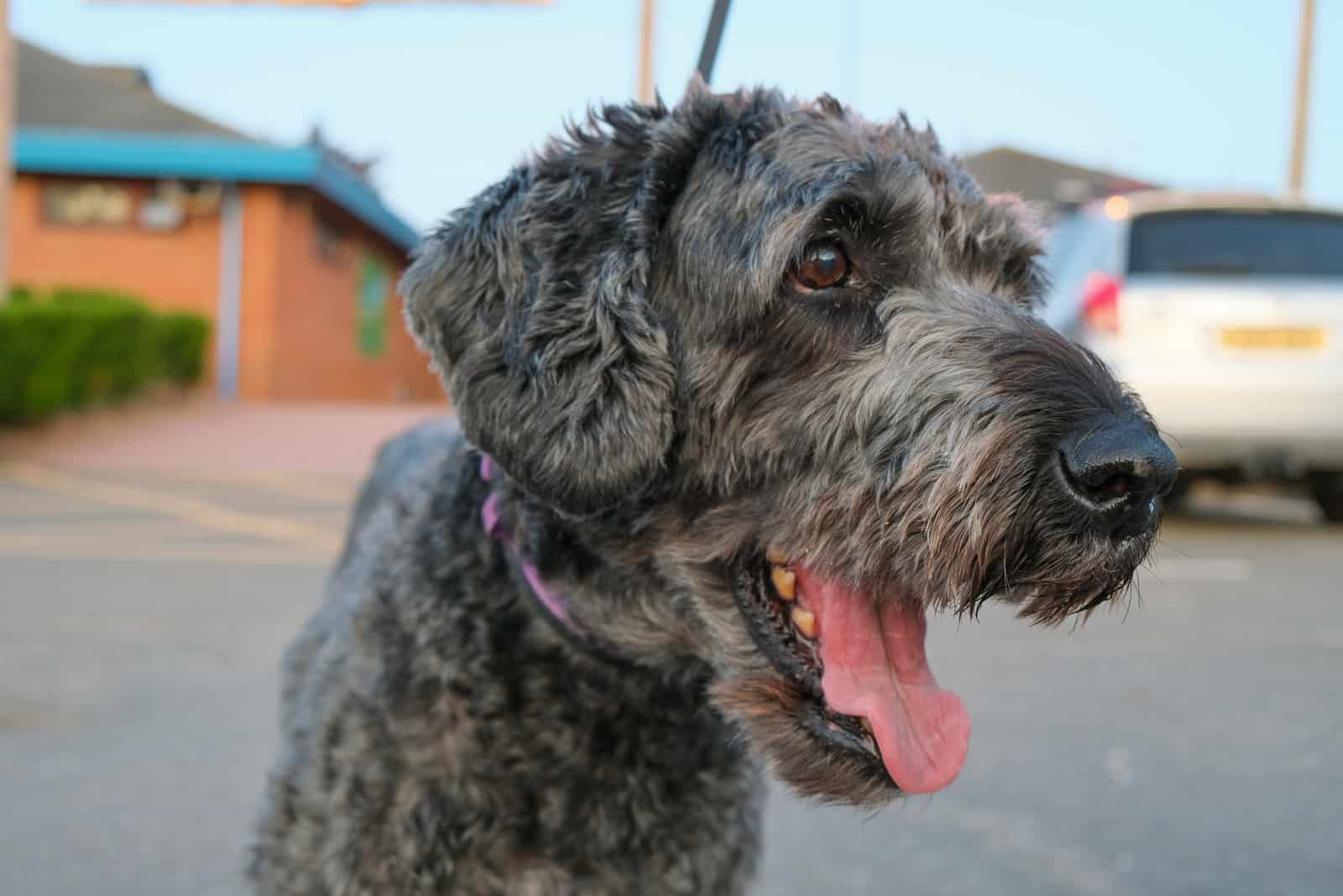
Blue, or silver Labradoodles, have a unique coat shade that is rarely found as a solid color. In fact, this hair tone is usually located in multi-colored Doodles, such as the sable, parti, or merle Labradoodles.
If you have a hard time imagining this color, think of it as a washed-out black.
Finding a Labradoodle that is entirely blue is almost impossible, despite this being a standard Poodle color.
Parti Labradoodle

The white parti Labradoodle is just one of many multi-colored Doodle colors, and it’s far from being a common one.
These dogs have two coat colors, and one of them has to be pure white. The other color can be of any shade that Labradoodles come in, but brown and apricot are the most common ones. They can also come in blue, while black is rare.
The recessive gene found in Poodles is responsible for this pattern. However, it is quite uncommon to find a parti Labradoodle that isn’t a multi-generation Labradoodle with plenty of Poodle genes.
To get a parti Labradoodle, you should breed two Doodles with this recessive gene, then hope their offspring will inherit it. If there is just one dominant gene in any of the parents, it can easily mess everything up.
Because of this, parti Labradoodles tend to be quite expensive. Most breeders will conduct DNA testing to ensure a pup would have the parti patterns.
As this color combination is fairly rare, there are virtually no two parti Labradoodles with the same markings.
Tuxedo Labradoodle
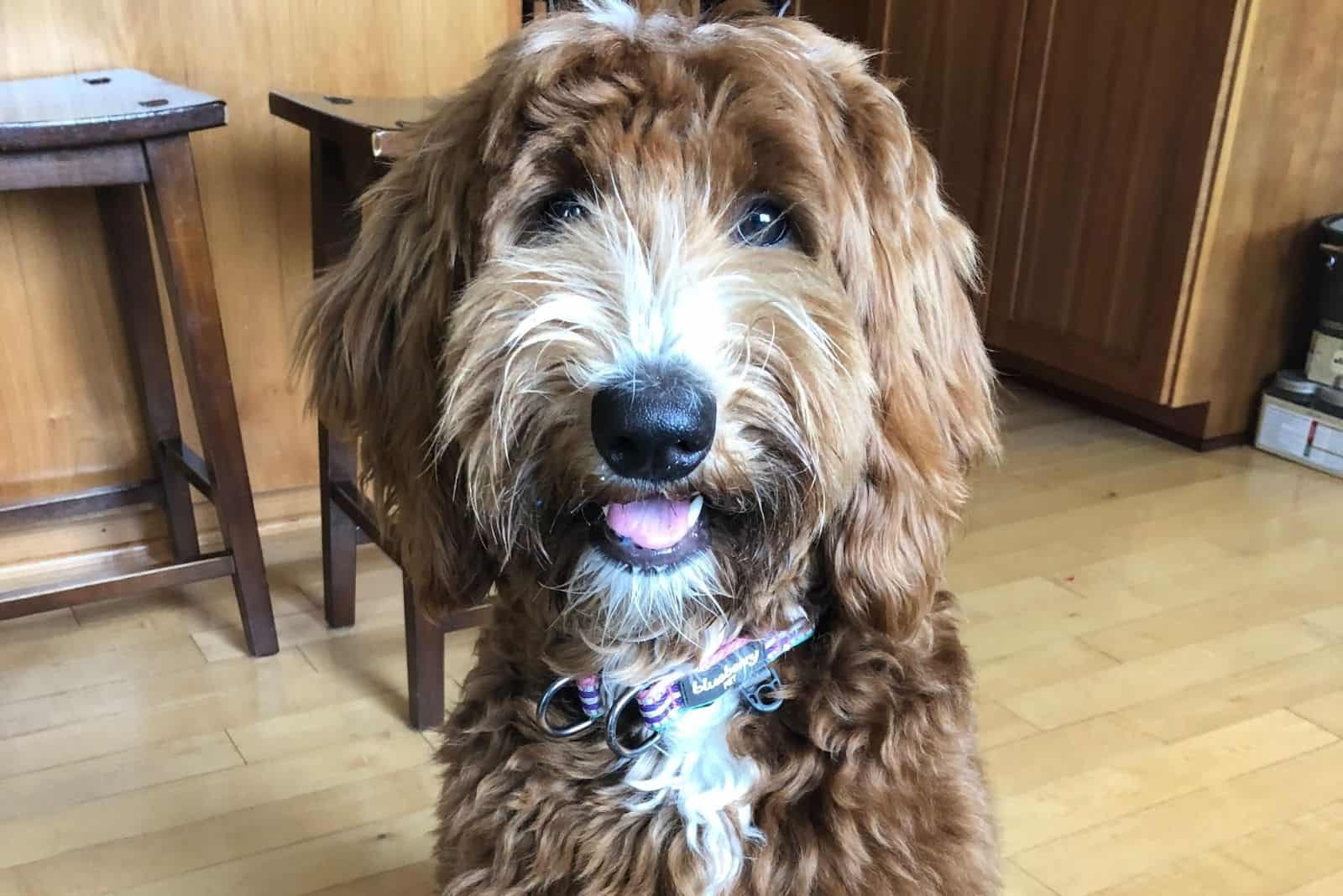
A tuxedo Labradoodle – or a black and white Labradoodle – is becoming more and more popular in recent years. These dogs have distinct features, such as a white tummy and legs, while the rest of the body is black.
As the markings resemble a tuxedo, this is how this variation got its name. However, not all black and white Labradoodles are considered Tuxedo. Some Labradoodles can also have white markings on their chests, muzzle, and top of their heads. This means they are not Tuxedo.
This is yet another pattern that is quite tricky to breed. To get a black and white Labradoodle, a breeder needs to crossbreed a parti Poodle with a white Labrador Retriever.
However, such an act doesn’t necessarily mean that the black and white genetics will pass on to the offspring. This makes these Labradoodles quite rare.
Sable Labradoodle
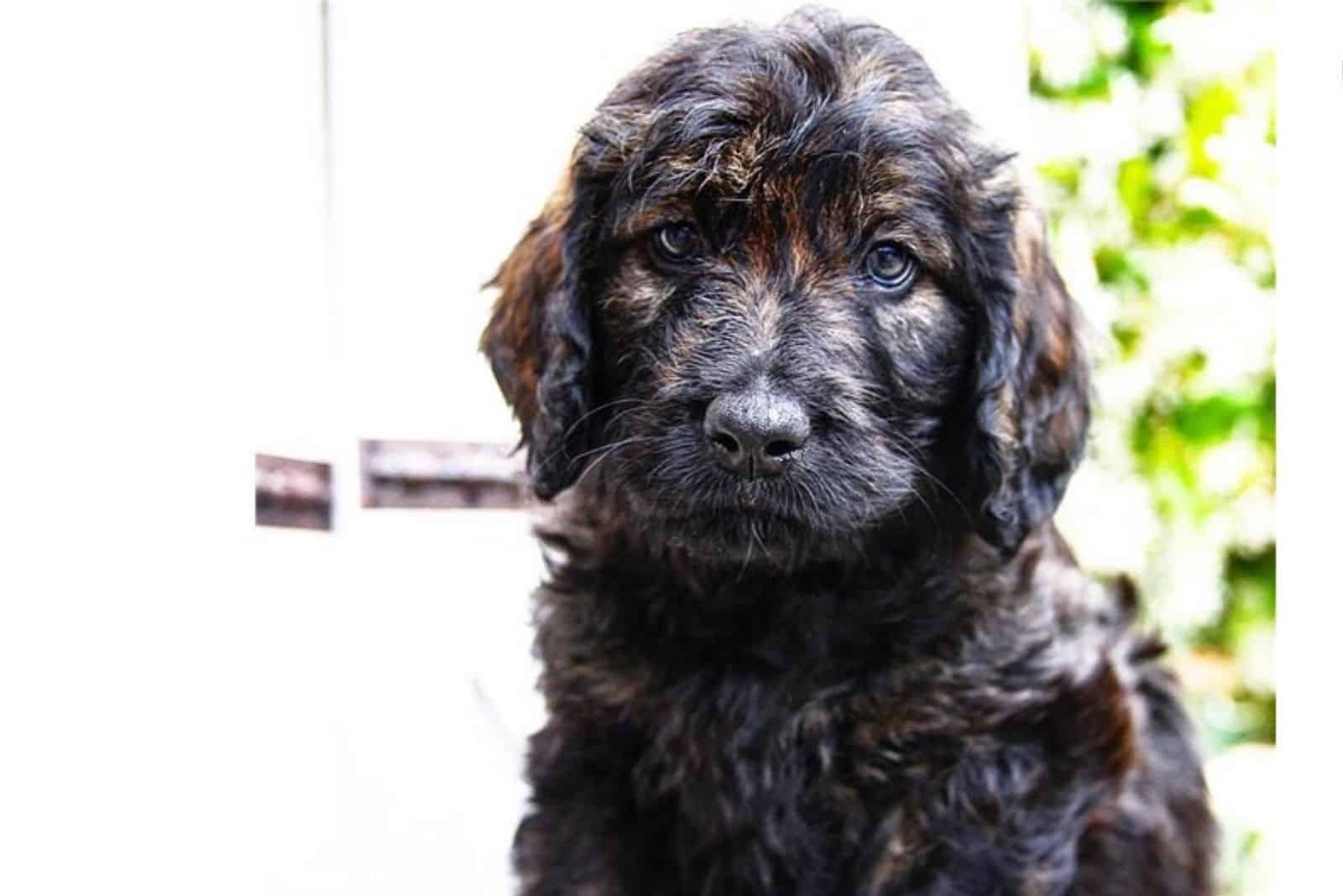
Chances are this is the most unique color pattern in a Labradoodle – especially since the sable pattern is tough to predict in Labradoodle puppies.
These dogs are entirely black during puppyhood. Then, as they grow older, most parts of their coat lighten, but some, such as the muzzle and their ear tips, remain black.
Even if a sable Labradoodle ends up being light cream when adults, some parts of their body will remain pitch black.
This is a rare color in Labradoodles, and you can’t find it everywhere.
Merle Labradoodle
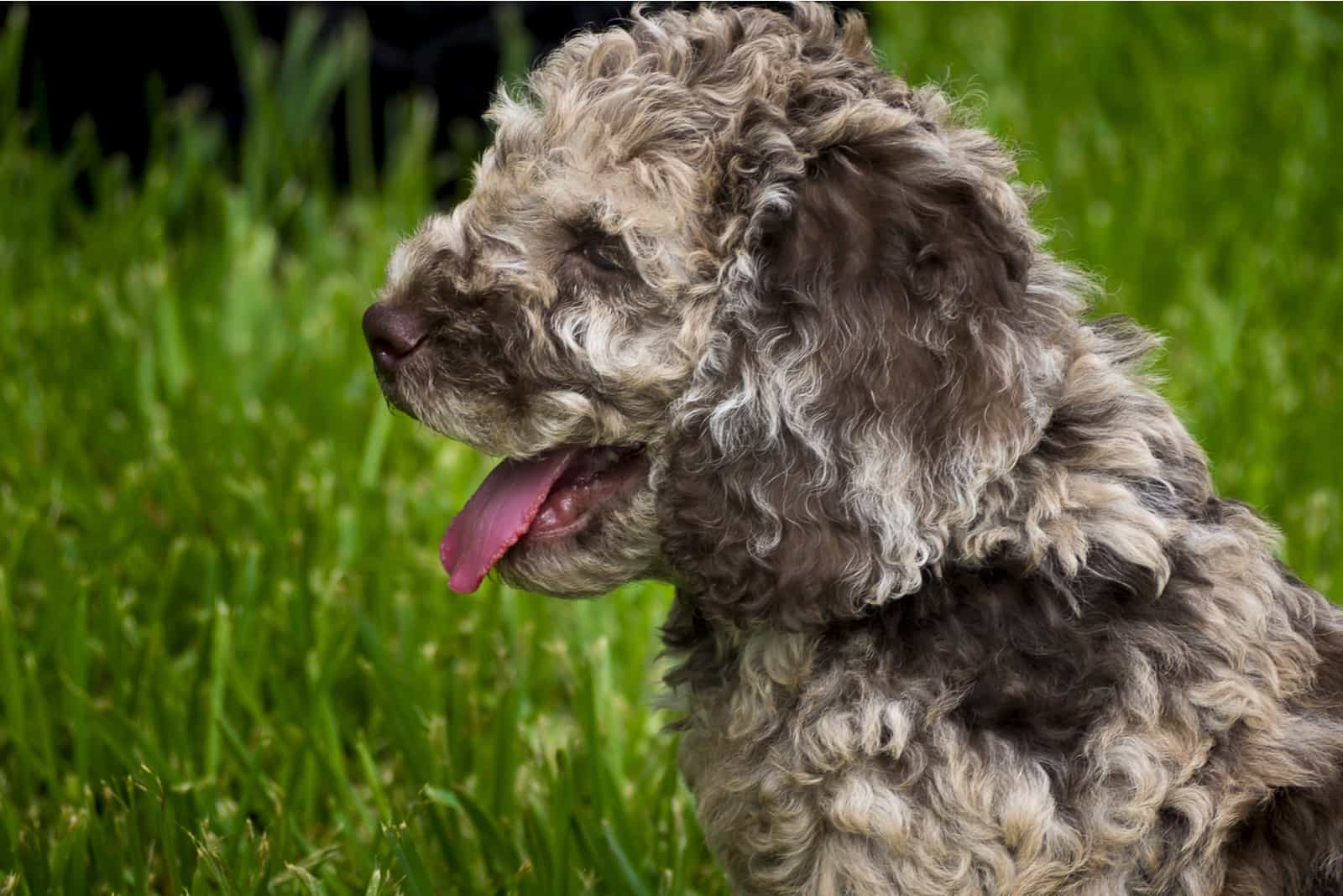
Merle Labradoodles are often confused with the Aussiedoodle, a crossbreed of a Poodle and an Australian Shepherd. They are quite rare when breeding two Labradoodles, as at least one has to have a strong merle gene.
The merle Labradoodle is quite different from the parti Labradoodle in that a dominant gene determines the merle pattern. This means that only one parent has to have it for it to show.
However, there are many health issues related to the merle gene. Because of this, you should never breed two merle Labradoodles, as their offspring can have problems with their bone structure, be visually or hearing impaired, and develop other similar health issues.
Grey Labradoodle
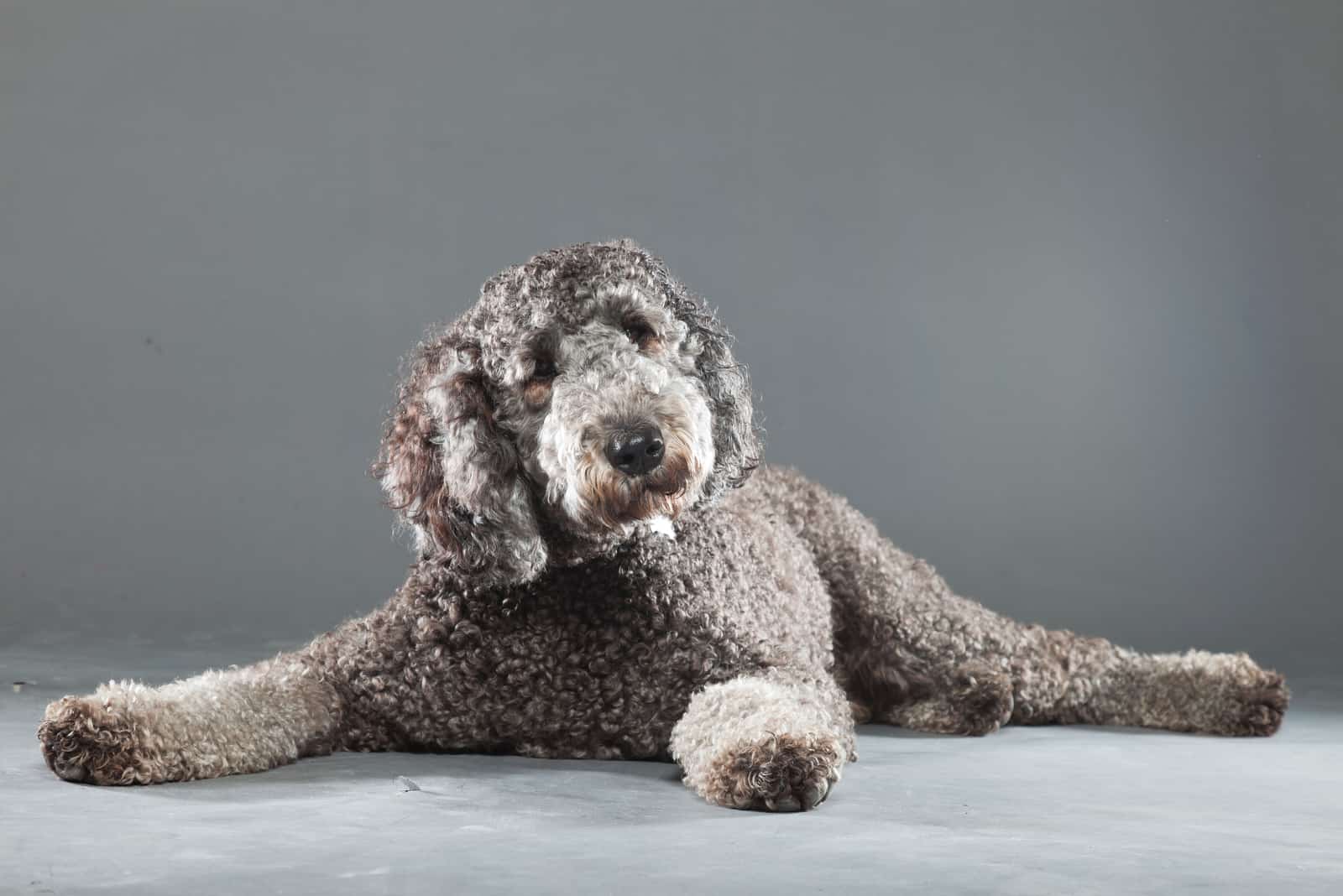
These Labradoodles resemble their Poodle parents the most. In fact, at first glance, they look just like a medium or large-sized silver Poodle.
This is yet another problematic coat type to predict in puppies since they are born looking like a chocolate Doodle. They won’t get their distinctive grey color until they are around two years old when their hair begins lightening.
Once the fading of the coat color is complete, these dogs will look pure silver and typically won’t have any dark brown hairs left.
The best way to know if the puppy will grow into a grey adult is to look at his skin underneath the brown coat. If their skin is light, chances are their coat color will fade. Keep in mind that this isn’t a guarantee and some brown Labradoodles are also light-skinned.
At the same time, this is yet another shade that is usually seen in Aussiedoodles, so these two hybrid breeds can end up mixed.
Phantom Labradoodle
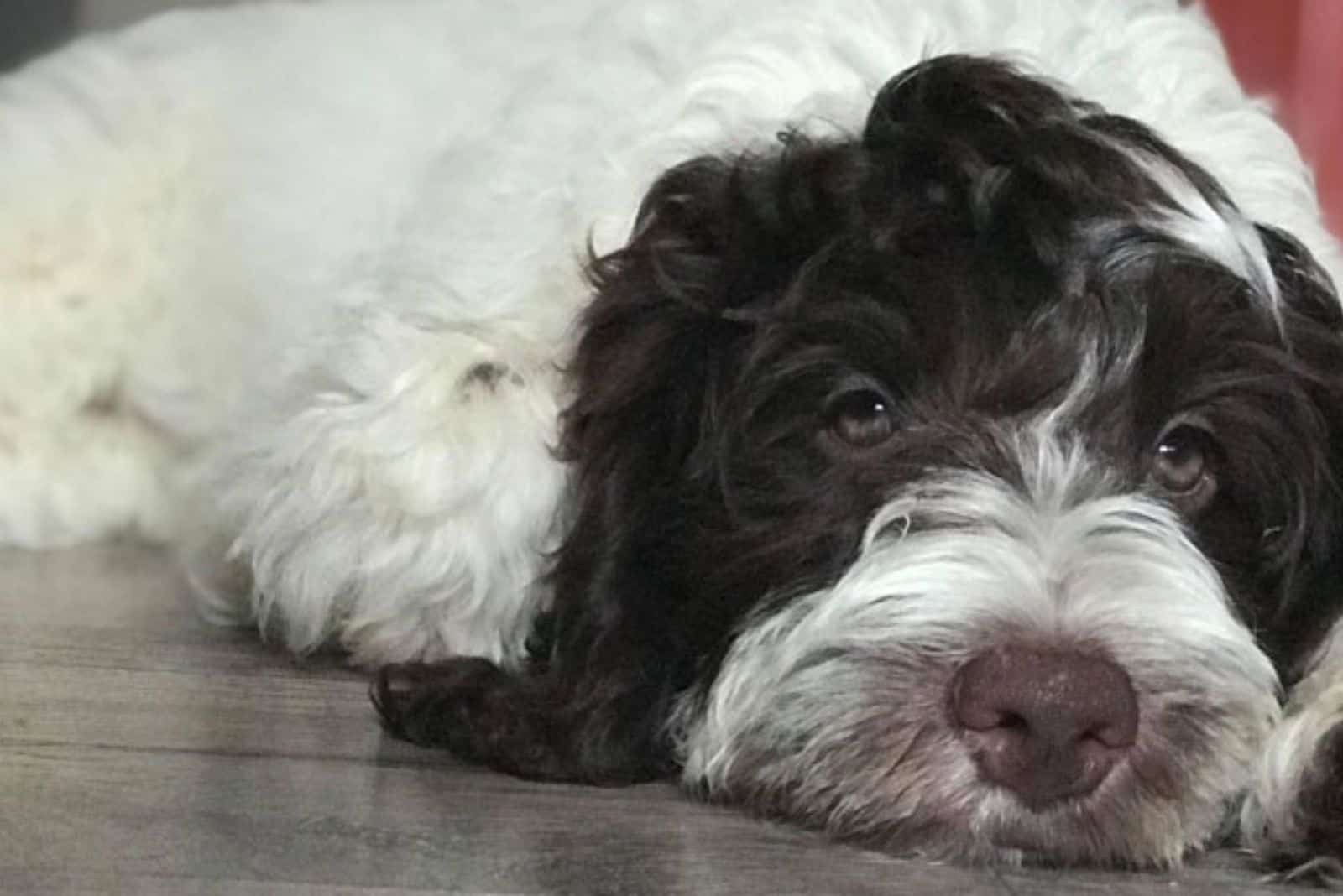
Finally, we get to the main color combination of this article – the phantom Labradoodle!
This is an exceptionally rare color for a Labradoodle because for a Labradoodle to be considered a phantom, it has to have distinct colors in specific areas of its body. This pattern is inherited from a phantom Poodle, as the pattern doesn’t exist in Labradors.
The majority of a phantom Labradoodle’s body should be one color, which is usually black. However, you can also find them in other colors, such as blue or a chocolate phantom.
The other color appears around the Labradoodles’ nose, face, eyes, paws, and sometimes as a line over their stomach.
The typical color combination for a phantom Labradoodle is black and brown. However, you can find them in quite a few other colors, such as brown and silver, black and cream, or brown and cream. Phantom Labradoodles can also have white markings.
Sometimes, the patterns on a phantom Labradoodle remind people of Dobermans – although, with their curly coat, there isn’t a way anyone could confuse these two breeds.
Since a phantom Labradoodle is born with its unique markings, it’s relatively easy to tell whether a dog will grow up with this pattern or not.
There isn’t a way for phantom colors to develop over time. If a pup doesn’t have these markings, it won’t develop them later on.
All of this makes phantom Labradoodle the rarest of all coat patterns.
Can You Predict a Labradoodle’s Coat Color?
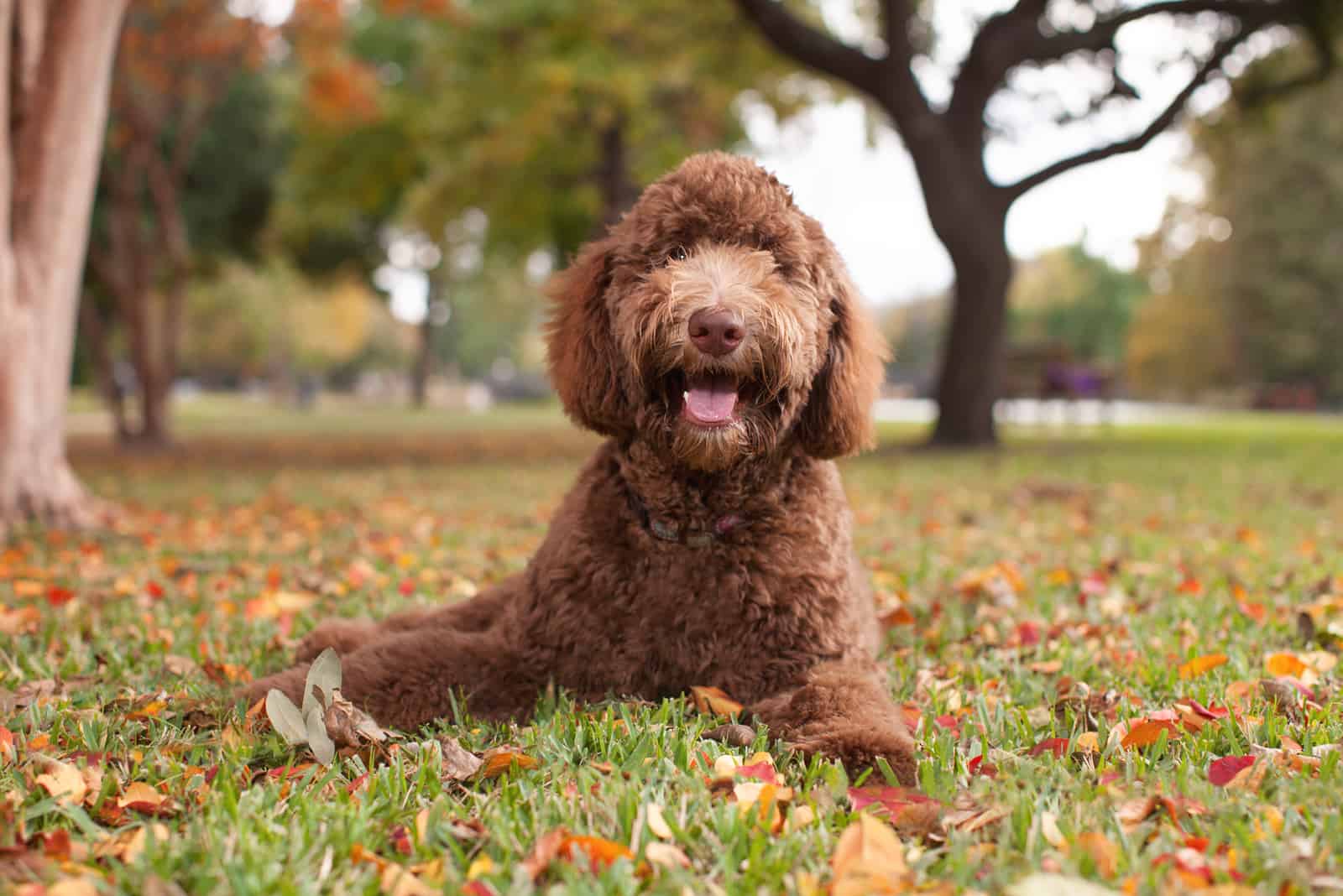
Luckily, a phantom Labradoodle is easy to tell right after birth. This pattern will appear immediately, and it won’t change as your pup grows older.
Other colors, however, can be quite challenging to predict.
As you’ve noticed, many shades appear as time passes, and sometimes a dog’s color can change after several years!
Not to mention that, since these aren’t purebred dogs, there isn’t a 100% chance of knowing how your puppy will look at all.
A general rule of thumb is to pick a Labradoodle that is at least a shade darker than you expect it to be since most will fade over time. Keep in mind that this isn’t the case with the phantom Labradoodle, which will usually stay exactly as it is.
While all Doodles are adorable, there is something special about phantom Labradoodles. Whether it is their unique pattern or how seldom the pattern appears, it seems like no one can resist them.
As DNA testing methods are becoming more advanced, chances are we’ll see more of these exotic-colored pets in the future.
Read Next: 7 Labradoodle Haircuts You Won’t Be Able To Resist
